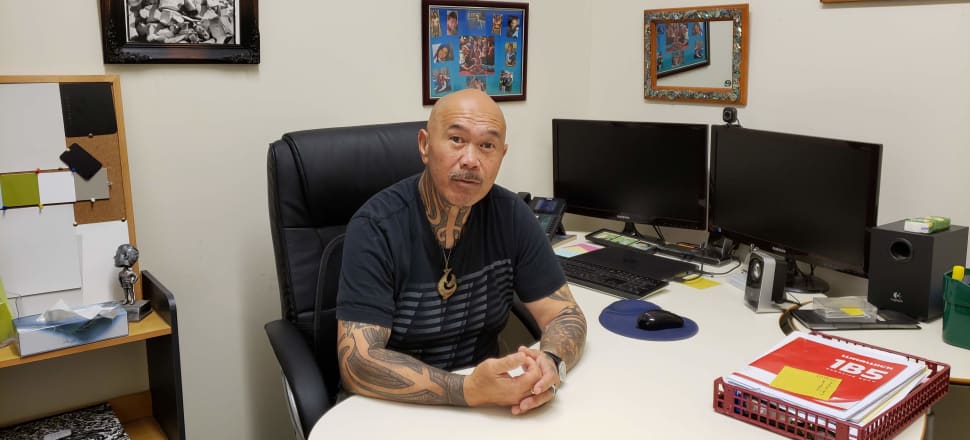By Mark Dalder – originally published via Newsroom | Photo: Marc Daalder
The Whangarei suburb of Otangarei has one of the region’s highest unemployment rates, but Te Hau Āwhiowhio ō Otangarei Trust wants to change that through tikanga Māori. Marc Daalder reports.
When the residents of Maunu think of the state housing tenants who may soon be their neighbours, they think of nearby Otangarei.
The Whangarei suburb is struggling, according to a number of metrics and residents like Te Hau Āwhiowhio ō Otangarei Trust CEO Martin Kaipo. But with a new wave of government funding over the past few years, Kaipo and his community trust have managed to make a world of difference.
Otangarei’s struggles
Nearly half – 48 percent – of Otangarei’s residents live in state-owned housing. Of these, 60 to 70 percent are unemployed and 48 percent are single-parent homes.
Overall, Otangarei still had an unemployment rate of 29.1 percent, according to the 2013 census – more than quadruple New Zealand’s national 2013 rate of 7.1 percent.
Of those working, nearly a quarter were labourers and another fifth were social workers, compared to 11 and 9 percent nationally, respectively. The percentages of managers and professionals in Otangarei in 2013 were half the national averages.
Just 5.5 percent of people in Otangarei had a personal income of over $50,000 in 2013. In New Zealand overall, that figure was more than a quarter.
Fewer than 4 percent of Otangarei residents had a bachelor’s degree or higher, compared to 13.9 percent in Whangarei and 20 percent nationwide.
Perhaps unsurprisingly, these numbers also correlate with race. More than seven in 10 people in Otangarei said they were Māori, dwarfing both Whangarei’s 26.2 percent and New Zealand’s 14.9 percent.
People left behind
Kaipo says this is no coincidence. The social systems of the 21st century have left behind the most vulnerable.
The trust roots its work in what he calls “sustainable societies” and “cultural productivity”. In essence, Kaipo is calling back to tikanga Māori and adapting the traditional style of village living to his community.
“Everyone had a collective responsibility to the village design and plan,” he said. “Everyone had a role and responsibility and contributed. But also they all had an understanding that they are the benefactors of [the system].”
These days, people aren’t supported in this way. In the absence of such support from community, they become dependent on larger systems that they have no role in creating or influencing.
“Now, today, the changes to the systems have created an environment for dependency. We’ve lost the skills of our role as men and women, to protect, to provide. We’ve become more individual than collective.”
That’s a far cry from the sustainable societies that people thrived in for centuries in Aotearoa. “We were organised. There was a leader, we had gardeners, we had fishermen, everyone had a role and everyone knew that role,” Kaipo said.
“When the gardens were ready, everyone had a responsibility to go and harvest. Everyone contributed to the labour and everyone made sure, in terms of the distribution of those resources, every whanau member had [enough] to last.”
Applying tikanga Māori in Otangarei
That’s the sort of society that Kaipo and the trust are trying to build in Otangarei. It begins with leading by example. When I visited Kaipo in the trust’s headquarters, I opened the door and was met with the laughter of children.
Partway through the interview, I asked him if the trust ran a daycare alongside its other services. “No,” he said. “How can we work with other families if we can’t work with our own? We’ve got to walk that talk.”
It wouldn’t have been a far-fetched idea, however. The trust seeks to provide community members with almost any service they could need, all in-house.
“We hold a full package of social wraparound [services],” Kaipo said. “We have a budgeting service, counsellors, social workers, work brokers. We have that all here.”
The trust is also looking at building houses to serve as emergency homes for community members in need.
Building a community
But the mission goes beyond service provision, as helpful as that is. Kaipo wants to build a community out of a people devastated by the challenges of living in a Pākehā system.
“We were a community that were quite withdrawn because people felt like they couldn’t express their frustration or anger.” So the trust undertook what was essentially a community beautification project, climbing telephone poles and affixing colourful signs declaring: “Welcome to Otangarei”.
“Putting those signs up allowed them to feel free and like they had a voice.”
“We have community events here, but no drugs, no alcohol,” he said. Turnout at these events is still incredibly high, he said. It helps people build positive relationships with one another and provides a model for the tamariki of the community.
“We want them to come and support the kids, but no alcohol. What we do to recognise their commitment through the year is give them jackets as recognition. You’ve got to recognise change and acknowledge it.
“Some of those strategies are as simple as you can get,” Kaipo admitted, “but it’s just about empowering people”.
Once that groundwork is laid, resource provision becomes many times more effective, Kaipo said. “In doing that same process, we also had to give families resources. Resources around education, children’s wellness, crime, employment,” he said.
“It takes a village to raise a child. In this space, it takes this village to make the home environment well. What did home wellness look like in the past? We were prosperous, people were employed, families supported their children in sports and in education.”

